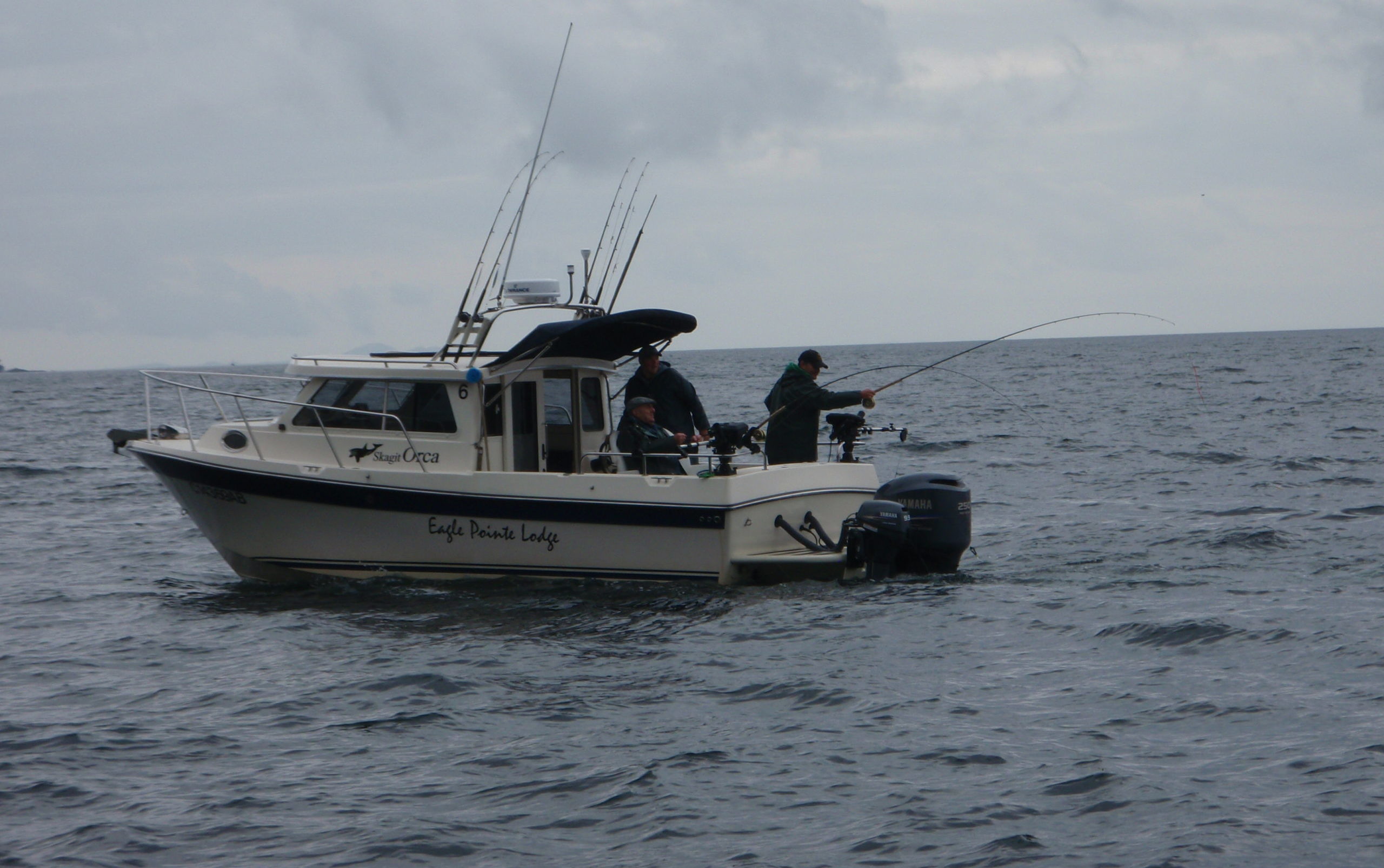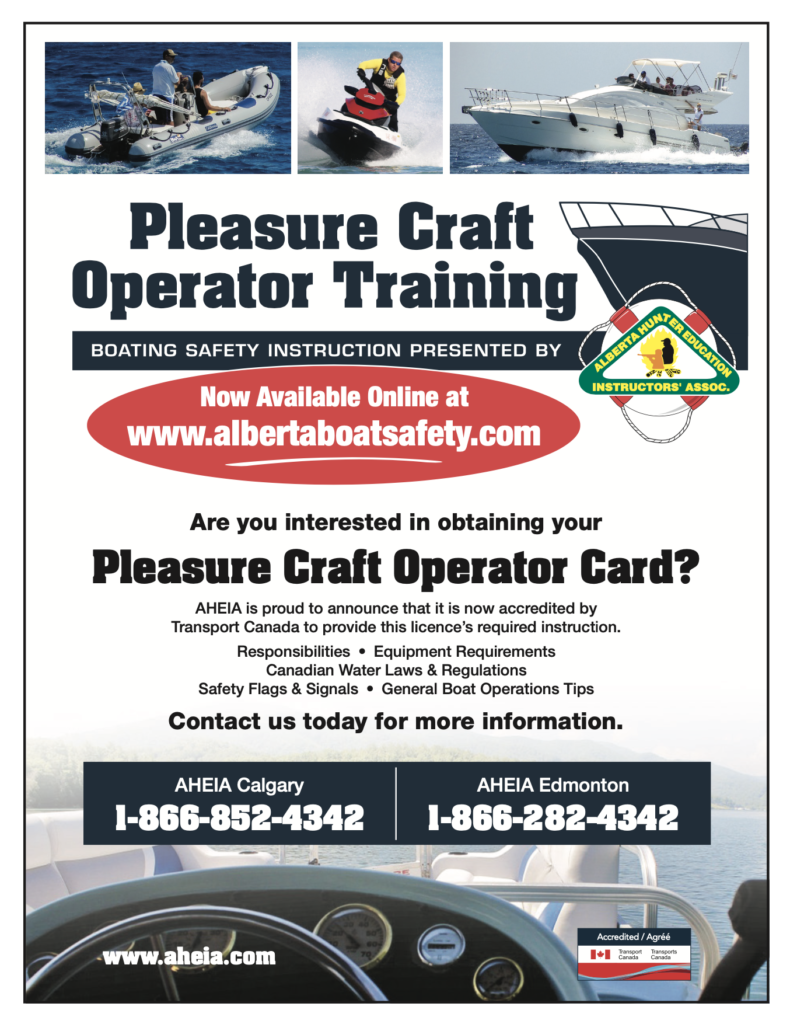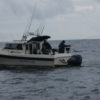So, you have your boat all loaded up and ready to go. Pleasure Craft Operator Card in hand, trip plan filed, and life jackets/PFDs for everyone. You launch your boat as quickly and efficiently as possible, making sure you do not hold up anyone trying to launch, or more importantly, to land their boats.
Now you need to be aware of the “Rules of the Road” as they relate to boating, and travel on the water.
There are three separate areas to keep in mind. They are:
– Maintaining a safe speed
– Maintaining a lookout
– Follow the rules of the road
Let’s look at them in some detail
Maintaining a Safe Speed
It is always the operator’s responsibility to maintain a safe speed so you can take action to avoid a collision. What is a safe operating speed? Well, for example, Alberta has a speed limit of 10km/h within 30 meters of shore except for:
– A boat towing a water skier straight out from shore
– Any boat on a river less than 100 meters in width
– Canals and buoyed channels
– Anywhere that speeds are otherwise posted.
Outside of the legal requirements, operators must adjust their speed to maintain safety taking in the following considerations as well:
– Wind
– Water conditions
– Surface obstructions
– Current
– Weather conditions
– Restricted visibility
– Draft in relation to available depth of water
– Boat capabilities
– Invisible hazards (rocks, shallow water, weeds)
Maintaining a Lookout
There are a lot of things to look for when you are boating – bridges, floats, swimmers, buoys, to name a few – so always be aware of what is happening around you. This means looking around, listening, and even checking behind you to see if any boats are going to overtake you.
It is a good idea to give one of your passengers the job of lookout. That way you can focus on driving and the lookout can keep watch. However, as the operator, you are ultimately responsible for providing and maintaining a lookout. Remember, it’s a Federal offence to tow someone behind your vessel without a lookout.
Follow the Rules of the Road
When you think of “Rules of the Road” you probably imagine city or highway driving. But there are rules of the road on the water too. They have to do with how boats interact with each other, like who has the right-of-way and who must move out of the way. Let us look at the right-of-way rules.
Give-way Vessels
A give-way vessel means a vessel that must keep out of the way of another vessel. The operator of the give-way vessel (A) must act as soon as possible to keep clear of the other vessel (B).
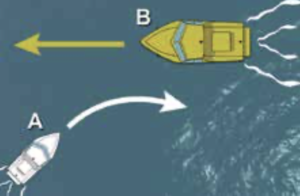
Stand-on Vessel
A boat that has the right-of-way is the stand-on vessel. The operator of the stand-on vessel must hold its speed and course. However, if the give-way vessel (B) is not taking action to comply with the rules, the operator of the stand-on vessel (A) must do their best to avoid a collision.

Right of way – Crossing other vessels
If two vessels are at risk of crossing in front of each other, the operator of the vessel that has the other vessel on their starboard (right) side should adjust their speed and/or course to cross behind the other vessel. In other words, just like driving your car through an uncontrolled intersection in the city, the person on the right has the right-of-way. Another way to remember this is by looking at the navigation lights. If the boat to the right has functioning navigation lights, the boat on the left will see a red (port) light which will tell them to adjust course. The boat on the left will see the approaching boat’s green (starboard) light and will know they are good to go, under normal circumstances.
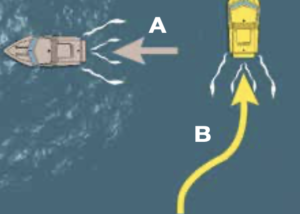
Right of way – Overtaking vessels
If you are approaching another vessel from astern (behind), you are the give-way vessel. You must therefore stay clear of the vessel in front of you which has the right-of-way. The give-way vessel can overtake on either side, but if safety is a concern, should pick the safest side.
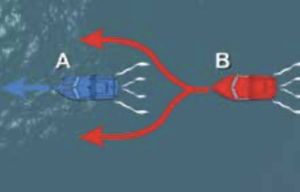
Head-on Situation – Altering Course
When two boats meet head-on, they should both alter their course to starboard (right) to pass on the port side.
If you need to alter course because you are about to collide with another boat, do so as soon as possible. Make your movement large enough so it is clear to the other boat operator that you are altering course.

Hierarchy of Responsibility Between Vessels
You have learned how to respond when you encounter a boat like yours. But what if you are at risk of colliding with a boat of a different type? Generally, boats that can more easily move out of the way are required to give-way to boats that cannot move as easily. The following list shows which boats have right-of-way over the others listed below it, in normal circumstances:
- Vessel Not Under Command
- A vessel that is damaged or abandoned or drifting, and may or may not have people aboard
- Vessel Restricted in its Ability to Manoeuver
- A boat engaged in some sort of work that makes it difficult or impossible to move out of the way of other boats. Examples – setting out swimming buoys, dredging, laying underwater cable
- Vessel Engaged in Fishing
- This means a vessel towing a commercial trawling or trolling net. This does not mean a boat being used for recreational angling
- Sailing Vessel
- While under power of sail only. If the motor is being used, it is considered a power vessel
- Paddle Craft (kayak, canoe, etc)
- Again, if the canoe is using a motor, it is considered a power vessel, as are jet-powered kayaks.
- Power Vessel
- Any powered vessel which requires the operator to hold a Pleasure Craft Operator Card and which is in working order.
